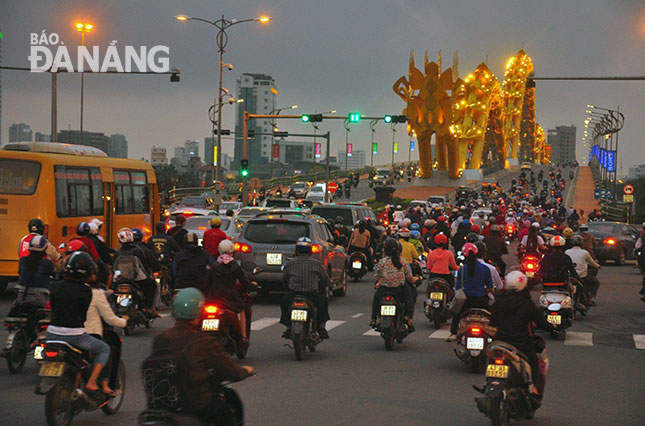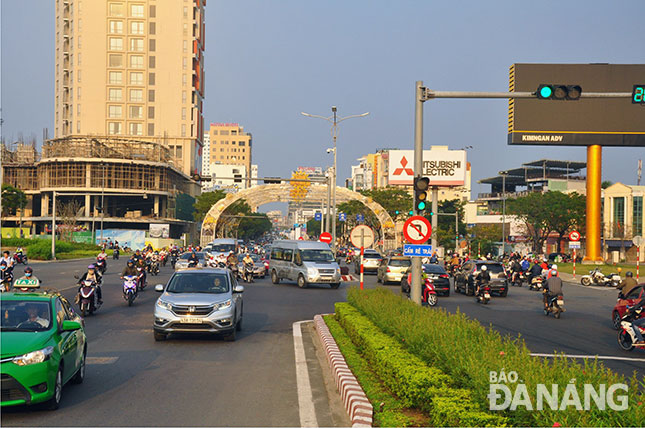Feasible solutions sought for traffic headache
Traffic congestion is one of the most concerning problems in major cities both in developed and developing countries worldwide, including Viet Nam’s Da Nang.
 |
| Traffic congestion seen at the western end of the Rong (Dragon) Bridge during rush hours |
Although in Da Nang the problem is not as bad as in Ha Noi and Ho Chi Minh City, it has recently occurred during rush hours at some downtown intersections.
Radically resolving this issue of deep concern, indeed, is a big challenge facing the city.
Amongst the city’s traffic gridlock hotspots are the intersections at the western end of the Rong (Dragon), Tran Thi Ly and Tien Son bridges, and the junction of Nguyen Tri Phuong, Nguyen Huu Tho and Le Dinh Ly streets.
Notably, the western approach road to the Dragon Bridge has many complicated intersections with Nguyen Van Linh, 2 September, Tran Phu, Bach Dang and Trung Nu Vuong.
The intersection of 2 September and Duy Tan streets also suffers from the same problem.
The congestion nightmare negatively impacts on the daily lives of local citizens.
In particular, traffic congestion causes an increase in travel time, fuel consumption costs, gas emissions and noise pollution, as well as a decline in the quality of the urban living environment. In addition, it restricts the city’s economic growth.
 |
| Heavy traffic flows during daytime |
A woman resident complained that she always gets upset for congestion as it usually takes much time for her to snake through the heavy traffic flows during rush hours.
Over recent years, the city has focused on speeding up the development of its transport infrastructure.
Nevertheless, since 2015, traffic congestion has been increasing in the city.
The main reason seems to be that there has been a dramatic increase in the number of personal vehicles, plus a rise in the number of tourist coaches.
Mr Dinh The Vinh, the Deputy Head of the municipal Construction Planning Institute pointed out to the fact that the city’s current traffic patterns are really complicated and in disorder.
It is reported that a total of about 5,000 intersections across the city, placing an enormous pressure on the local authorities in finding efffective ways to handle this matter.
The Head of the municipal People Council’s Board of Urban Affairs, Mr To Van Hung, noted that if the recreation of road surface marking and traffic islands, and other related applications can not help to relieve traffic gridlock at complicated intersections, it would be an urgent task to take more suitable solutions.
In an attempt to tackle congestion in the city centre as a result of the growing volume of private vehicles, it is a good idea to fully tap the potential of underground space, and efficiently use public transport services, airways and waterways.
Also, one priority should be given to earmarking land fund for the development of static traffic systems.